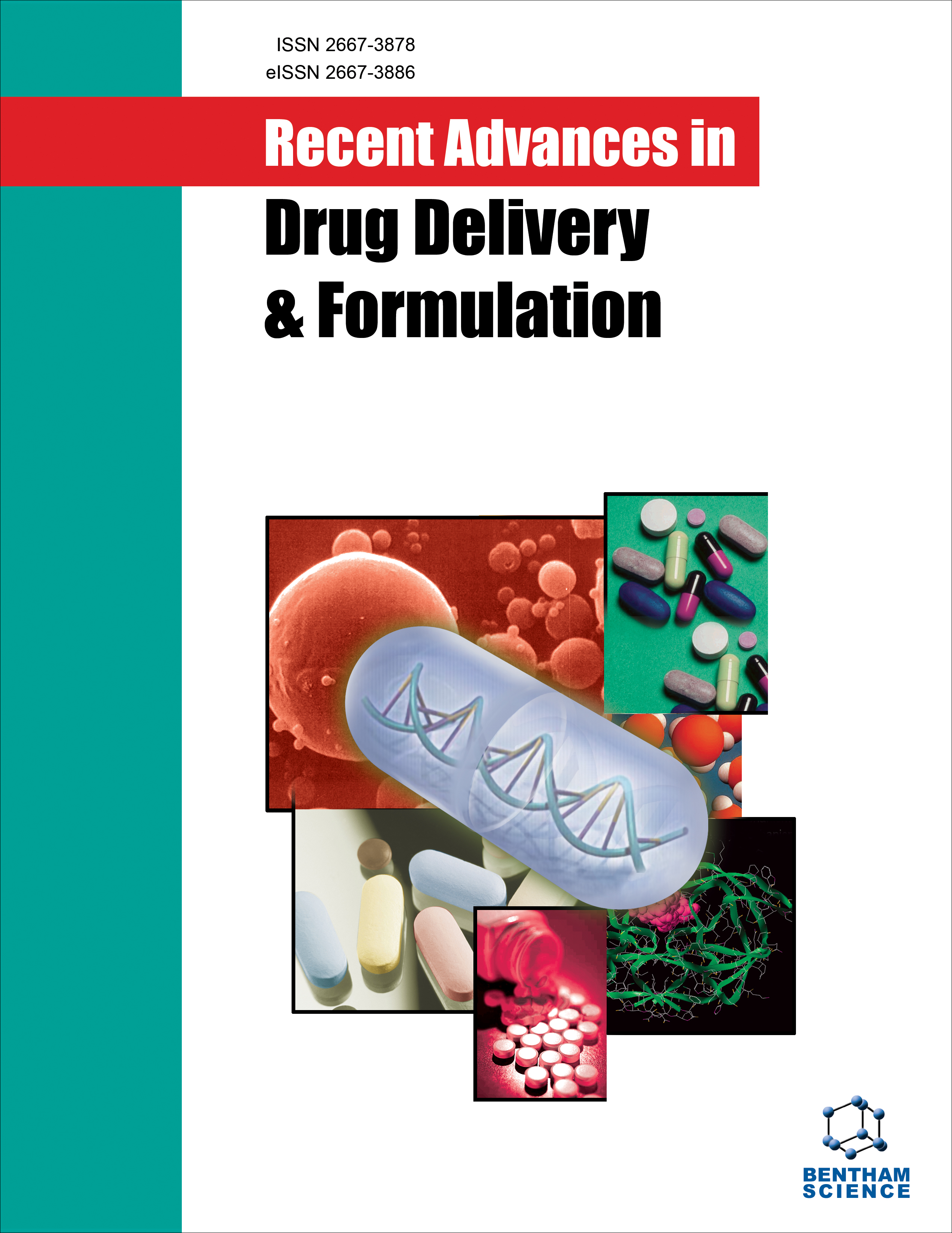- Home
- A-Z Publications
- Recent Advances in Drug Delivery and Formulation
- Previous Issues
- Volume 17, Issue 1, 2023
Recent Advances in Drug Delivery and Formulation - Volume 17, Issue 1, 2023
Volume 17, Issue 1, 2023
-
-
Deep Eutectic Solvents: Fundamental Aspect, Characterizations and Applications
More LessDeep eutectic solvents (DESs) containing bioactive have been explored as potential choices for therapeutic efficiency enhancement. DESs are regarded as superior compared to established solvents owing to accessibility, storage conditions, synthesis, and low cost. As such, intensive research has taken place in different disciplines, especially nutraceuticals, foods and pharmaceuticals. The applications of DESs, especial Read More
-
-
-
Biodegradable Polymer-Based Microspheres for Depot Injection-Industry Perception
More LessAuthors: Anand Kyatanwar, Mangal Nagarsenker and Bala PrabhakarThe discovery of proteins and peptides marked the actual beginning for pharmaceutical companies to do research on novel delivery systems for delivering these therapeutic proteins. Biodegradable polymer-based microspheres for controlled-release depot injection are known for decades and have proved to be one of the best possible approaches. Despite being known for decades, the commercial success of microsphere-base Read More
-
-
-
An Overview of Recent Patents and Future Perspective Based on Cyclodextrin Complexation
More LessAuthors: Ritu Kaushik, Ravinder Verma, Vikas Budhwar and Deepak KaushikThe majority of drugs taken orally have limited aqueous solubility and dissolution rate. Cyclodextrin (CD) and its derivatives are used as pharmaceutical adjuvants, contributing to the development of safe and high bioavailability formulations. CDs have a unique structure with a variety of physicochemical features that aid pharmaceutical scientists in solving drug delivery issues for poorly water-soluble drugs (PWS). This Read More
-
-
-
Application of D-Optimal Mixture Design in the Development of Nanocarrier-Based Darifenacin Hydrobromide Gel
More LessAuthors: Divya Patel, Maanika Menon, Pranav Shah, Meenakshi Patel and Manisha LalanBackground: Darifenacin hydrobromide, a BCS Class II drug, is poorly bioavailable due to extensive first-pass metabolism. The present study is an attempt to investigate an alternative route of drug delivery by developing a nanometric microemulsion-based transdermal gel for the management of an overactive bladder. Methods: Oil, surfactant, and cosurfactant were selected based on the solubility of the drug, and surfactant: co Read More
-
-
-
Sorafenib Loaded Resealed Erythrocytes for the Treatment of Hepatocellular Carcinoma
More LessAuthors: Raj M. Desai, Neha Desai, Munira Momin and Lokesh K. BhattBackground: This study aims to formulate and characterize sorafenib-loaded resealed erythrocytes (SoRE) and investigate their anticancer activity in a rat model of hepatocellular carcinoma. Methods: SoRE were prepared by hypotonic dialysis of red blood cells obtained from Wistar rats using a range of drug-containing dialysis mediums (2-10 mg/ml) and osmosis time (30-240 mins). Optimized SoRE (8 mg/mL and 240 mins) were Read More
-
-
-
Design and Statistical Optimization of Novel Polyelectrolyte Complex Microbeads to Improve Entrapment Efficiency and Release Study of Vildagliptin
More LessAuthors: Ritesh K. Tiwari, Lalit Singh and Mukesh Kr. SinghBackground: The current research focused on the improvement of drug entrapment efficiency and release study of hydrophilic drug through polymer complextation. Objective: Ionotropic gelation technique was utilised for the preparation of Polyelectrolyte complex microbeads of Vildagliptin using Sodium alginate and Eudragit RL100 and their performance was optimized by Central composite design. Methods: Four Read More
-
Volumes & issues
Most Read This Month
Article
content/journals/raddf
Journal
10
5
false
en


